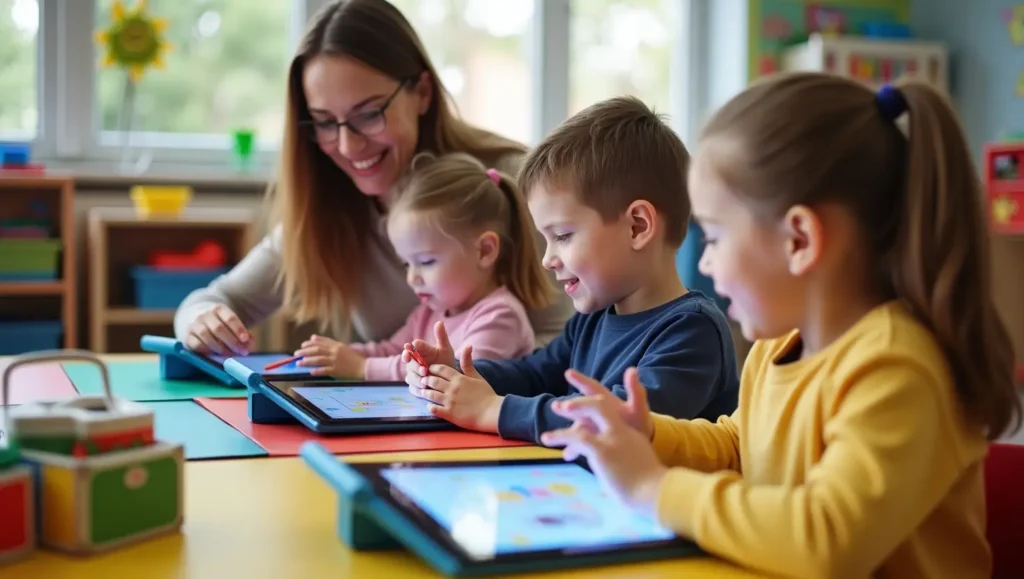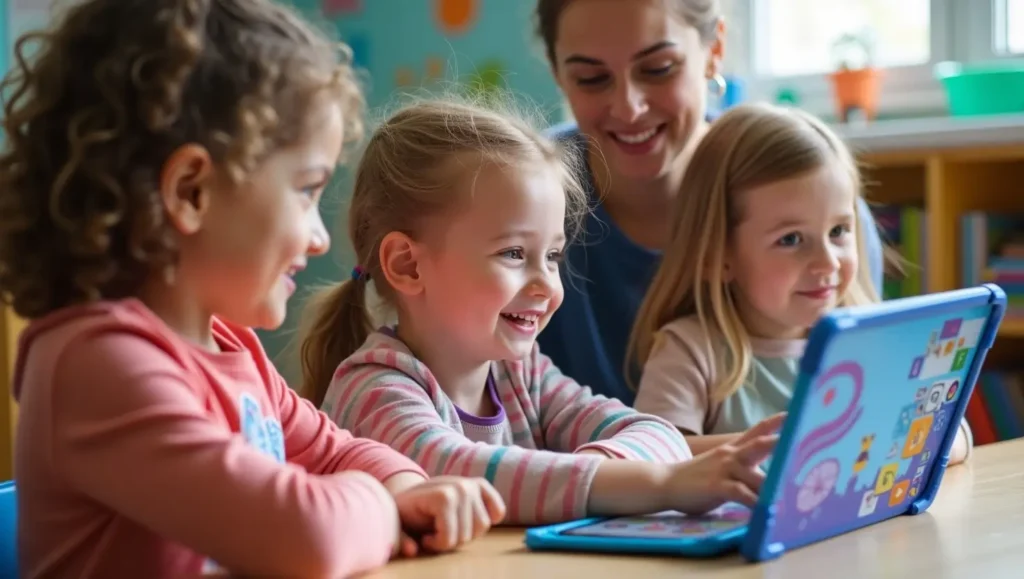Introduction: The Digital Playground for Modern Minds
Welcome to denzidesign.com. In today’s tech-driven world, play has evolved far beyond swings and blocks. Now, children explore vast digital playgrounds through apps, games, and interactive platforms—collectively known as digital playgrounds. But how exactly does this kind of play shape young minds?
This blog explores how digital play enhances creativity and learning in young minds, using real-world examples, expert insights, and the latest research to highlight its role in child development.
What Is Digital Play?
Digital play refers to the use of technology-based tools—like tablets, apps, and smart toys—for educational and recreational activities. It blends creativity, interaction, and problem-solving with modern digital tools to engage children in new, meaningful ways.
Types of Digital Play:
- Creative Play: Drawing apps, storytelling games
- Constructive Play: Minecraft, LEGO Builder apps
- Role Play: Virtual dollhouses, character-based simulations
- Educational Play: Language and math-based learning apps
Popular Digital Play Examples:
- Building and coding with ScratchJr
- Solving puzzles on Endless Alphabet
- Exploring AR with QuiverVision
- Creating virtual art with Procreate for Kids

Why Digital Play Matters in Early Childhood
1. Stimulates Cognitive Development
Digital play challenges young brains by improving:
- Problem-solving skills
- Pattern recognition
- Decision-making
- Logical thinking
Apps like Toca Lab and ABCmouse introduce foundational skills in fun, interactive formats.
2. Boosts Language and Communication
Interactive storytelling apps and speech-recognition games allow children to explore vocabulary and sentence formation in a way that’s both playful and educational.
How Digital Play Enhances Creativity
1. Encourages Imagination and Innovation
Apps that allow children to create art, music, or digital stories enable open-ended play. Unlike fixed toys, digital tools adapt to a child’s ideas.
“When digital tools are open-ended and child-directed, they foster rich imaginative play and creation.” — Dr. Marina Bers, child development expert at Tufts University
2. Promotes Digital Storytelling
Games like My Story Book Maker and Book Creator help children craft characters, build narratives, and visualize ideas, enhancing their storytelling abilities.
3. Facilitates Experimentation Without Risk
Children can try, fail, and try again in digital environments without real-world consequences—fostering persistence and creative problem-solving.

Educational Benefits of Digital Play
1. Personalized Learning
Many digital play platforms are adaptive. They respond to a child’s pace, customizing content to support individual learning styles and needs.
2. STEM and Coding Skills
Apps like:
- Osmo Coding Awbie
- Lightbot
- Tynker
…teach children basic coding logic, sequencing, and cause-effect thinking—all essential for 21st-century careers.
3. Enhances Fine Motor Skills
Interacting with touchscreens, dragging objects, and tracing letters help refine motor coordination and hand-eye alignment.
Real-World Use Case: Digital Play in the Classroom
At Discovery Charter School in Indiana, teachers incorporated iPads with Tynker and Osmo kits. The students engaged in STEM activities, coding basic robots and designing circuits virtually.
The outcome? Higher test scores in math and science and stronger collaboration among students.
Balancing Screen Time: Digital Play vs Passive Use
Not all screen time is created equal. Active digital play is distinct from passive viewing like watching YouTube videos.
Guidelines for Healthy Digital Play:
- American Academy of Pediatrics Recommendation:
- Ages 2–5: Limit screen use to 1 hour/day of high-quality content
- Encourage Co-Play: Parents and educators should play together with the child to enhance interaction and understanding.
- Prioritize Creation Over Consumption: Choose apps where children make, build, or problem-solve.
Challenges of Digital Play (and How to Overcome Them)
1. Screen Addiction Risks
- Use time management tools like Google Family Link or Apple Screen Time
- Set daily limits and include physical play in the routine
2. Quality Control
- Not all apps are educational—some are ad-heavy or poorly designed
- Look for teacher-reviewed apps or those certified by Common Sense Media
Top Digital Play Apps for Different Ages
| Age Group | App Name | Purpose |
|---|---|---|
| 2–4 yrs | Sago Mini World | Imaginative Play |
| 4–6 yrs | Endless Alphabet | Language & Literacy |
| 6–8 yrs | ScratchJr | Intro to Coding |
| 8–10 yrs | Minecraft Education | Creativity & Collaboration |
Emerging Trends in Digital Play
1. AI-Driven Learning
New AI-powered platforms offer real-time feedback, guiding children as they learn to draw, code, or read.
2. Augmented Reality Integration
Apps like Merge EDU and QuiverVision combine the physical and virtual worlds, offering interactive learning in 3D.
3. Multisensory Digital Play
Toys that pair with apps (e.g., LEGO Hidden Side) offer tactile experiences combined with screen-based learning.
Expert Tips for Parents and Educators
- Choose apps with purpose (creativity, problem-solving, STEM)
- Co-play frequently to model digital literacy
- Encourage storytelling using voice-recording or drawing apps
- Blend with real-world activities, like drawing a creature digitally, then making it from craft materials
Conclusion: The Power of Digital Play Grand
Digital play is no longer a luxury—it’s a necessary tool in modern child development. When used intentionally, digital play grand supports cognitive growth, nurtures creativity, and equips children with vital 21st-century skills.
Whether it’s coding a robot, painting on a tablet, or building a virtual city, digital play opens doors to limitless possibilities in a child’s world of imagination and learning.
✅ Call to Action
💡 Do you believe digital play supports creativity and learning?
Share your thoughts or favorite apps in the comments below!
📩 Enjoyed this blog? Subscribe to our newsletter for weekly tips on parenting, edtech tools, and more!
📲 Explore a digital play app today and see the joy of learning unfold in your child’s eyes

